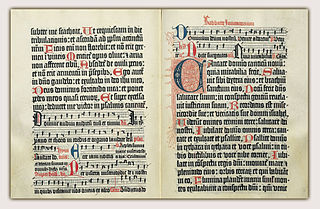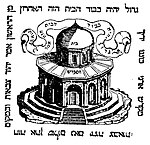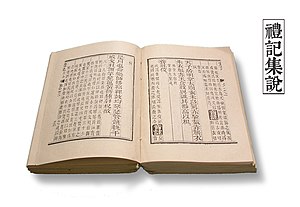
A bestiary is a compendium of beasts. Originating in the ancient world, bestiaries were made popular in the Middle Ages in illustrated volumes that described various animals and even rocks. The natural history and illustration of each beast was usually accompanied by a moral lesson. This reflected the belief that the world itself was the Word of God and that every living thing had its own special meaning. For example, the pelican, which was believed to tear open its breast to bring its young to life with its own blood, was a living representation of Jesus. Thus the bestiary is also a reference to the symbolic language of animals in Western Christian art and literature.

Robert I Estienne, known as Robertus Stephanus in Latin and sometimes referred to as Robert Stephens, was a 16th-century printer in Paris. He was the proprietor of the Estienne print shop after the death of his father Henri Estienne, the founder of the Estienne printing firm. Estienne published and republished many classical texts as well as Greek and Latin translations of the Bible. Known as "Printer to the King" in Latin, Hebrew, and Greek, Estienne's most prominent work was the Thesaurus linguae latinae which is considered to be the foundation of modern Latin lexicography. Additionally, he was the first to print the New Testament divided into standard numbered verses.

Daniel Coit "D. C." Gilman was an American educator and academic. Gilman was instrumental in founding the Sheffield Scientific School at Yale College, and subsequently served as the second president of the University of California, Berkeley, as the first president of Johns Hopkins University, and as founding president of the Carnegie Institution.

Mark Catesby was an English naturalist who studied the flora and fauna of the New World. Between 1729 and 1747, Catesby published his Natural History of Carolina, Florida and the Bahama Islands, the first published account of the flora and fauna of North America. It included 220 plates of birds, reptiles, amphibians, fish, insects, mammals and plants.

The University of California Press, otherwise known as UC Press, is a publishing house associated with the University of California that engages in academic publishing. It was founded in 1893 to publish scholarly and scientific works by faculty of the University of California, established 25 years earlier in 1868, and has been officially headquartered at the university's flagship campus in Berkeley, California, since its inception.
Jonathan Goldberg was an American literary theorist who was the Sir William Osler Professor of English Literature at Johns Hopkins University, and Arts and Sciences Distinguished Professor Emeritus of English at Emory University where he directed Studies in Sexualities from 2008 to 2012. His work frequently deals with the connections between early modern literature and modern thought, particularly in issues of gender, sexuality, and materiality. He received his BA, MA, and PhD from Columbia University.

An Ex Libris from ex-librīs, also known as a bookplate, is a printed or decorative label pasted into a book, often on the front endpaper, to indicate ownership. Simple typographical bookplates are termed "book labels".

The Library Quarterly is a quarterly double-anonymous peer-reviewed academic journal covering library science, including historical, sociological, statistical, bibliographical, managerial, psychological, and educational aspects of the field. It is published by the University of Chicago and was established to fill a need for investigation and discussion set forth by the American Library Association in 1926. The editors are Paul T. Jaeger and Natalie Greene Taylor, with associate editors Jane Garner and Shannon M. Oltmann.

The Mainz Psalter was the second major book printed with movable type in the West; the first was the Gutenberg Bible. It is a psalter commissioned by the Mainz archbishop in 1457. The Psalter introduced several innovations: it was the first book to feature a printed date of publication, a printed colophon, two sizes of type, printed decorative initials, and the first to be printed in three colours. The colophon also contains the first example of a printer's mark. It was the first important publication issued by Johann Fust and Peter Schoeffer following their split from Johannes Gutenberg.
John Kinder Gowran Shearman was an English art historian who also taught in America. He was a specialist in Italian Renaissance painting, described by his colleague James S. Ackerman as "the leading scholar of Italian Renaissance painting", who published several influential works, but whose expected major book on Quattrocento painting, for the Penguin/Yale History of Art series, never appeared. However, what is widely acknowledged as his most influential book, on the concept of Mannerism, published in 1967, is still in print.
William Edwin Rudge is the name of a grandfather, father and son, all of whom worked in the printing business. It's also the name of their business.
The Consortium of European Research Libraries (CERL) is a consortium of research libraries, primarily in Europe, that facilitates access to historians with an interest in the history of the book by providing online resources. The organisation also makes grants to librarians, holds seminars and workshops, and since 1998 has published a periodical called CERL Papers. It was founded in 1992 and since 2021 has been registered in the Republic of Ireland as a company limited by guarantee, based in Dublin.
Anne Coldiron is an American humanities scholar, university professor and author, Professor Emerita at Florida State University.
Claude Chevallon (1479–1537) was a medieval French printer.
Walter Howard Rubsamen was an American musicologist specializing in Italian music of the Renaissance, Ballad Opera, as well as music and politics. He was professor of musicology at the University of California, Los Angeles (UCLA).
Italy is the home of two of the world's biggest publishers of books in terms of revenue: Messaggerie Italiane and Mondadori Libri. Other large publishers include De Agostini Editore, Feltrinelli and the RCS MediaGroup.
Dirk Imhof is a Belgian book historian, author and museum curator specializing in rare books and rare maps of Renaissance Europe, particularly the activities and output of Christopher Plantin and his successor Jan Moretus at the Plantin Press in 16th-century Antwerp.

Bibliography of early American publishers and printers is a selection of books, journals and other publications devoted to these topics covering their careers and other activities before, during and after the American Revolution. Various works that are not primarily devoted to those topics, but whose content devotes itself to them in significant measure, are sometimes included here also. Works about Benjamin Franklin, a famous printer and publisher, among other things, are too numerous to list in this bibliography, can be found at Bibliography of Benjamin Franklin, and are generally not included here unless they are intensely devoted to Franklin's printing career. Single accounts of printers and publishers that occur in encyclopedia articles are not included here.

The Women of the Book Collection is the largest gathering of rare books, pamphlets, manuscripts, and ephemera dedicated entirely to the lives and cultural experiences of early modern women, circa 1450–1800. It is held at the Special Collections Department of Johns Hopkins University's The Sheridan Libraries. What distinguishes the collection is its singular focus on Roman Catholic women religious, in particular nuns, female mystics and miracle workers, and lay holy women.

This is a comprehensive list of primary and secondary works by or about Benjamin Franklin, one of the principal Founding Fathers of the United States. Works about Franklin have been consistently published during and after Franklin's life, spanning four centuries, and continue to appear in present-day publications. Scholarly works that are not necessarily subject-specific to Franklin, yet cover his life and efforts in significant measure, may also be included here. In contrast, this bibliography does not include the numerous encyclopedia articles and short essays about Franklin..











